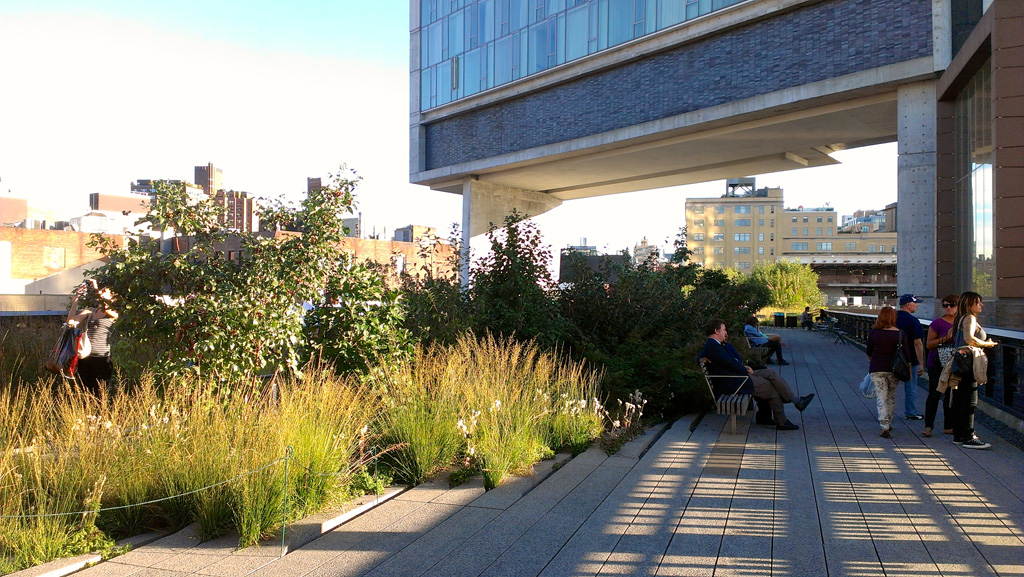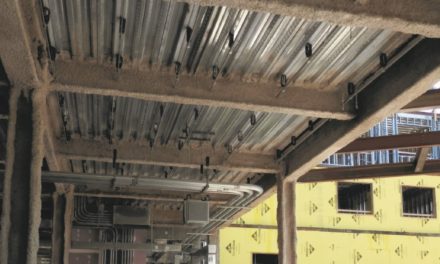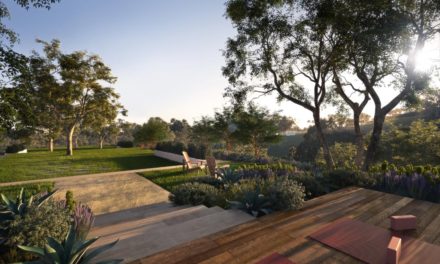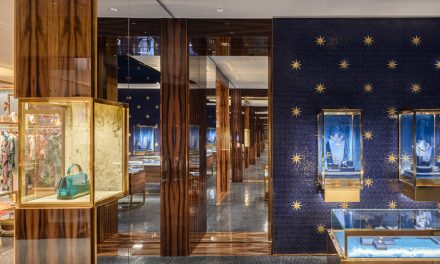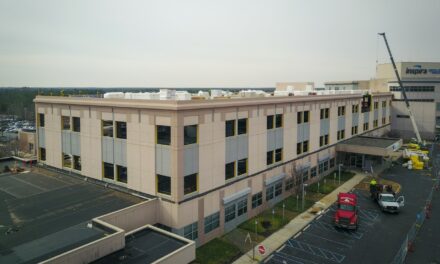Why designing with nature in mind makes financial sense
Humans have traditionally improved the places in which we live and work to increase our comfort and productivity. These improvements have often been based on technological advancements that enhanced the health and welfare of building occupants, but have paid little attention to our more subtle physiological needs. Recent advancement in our understanding of natural systems, coupled with a growing awareness of the subtle neurological and physiological functions associated with contact with nature, have increased our ability to identify appropriate strategies for increasing economic gains, improving productivity, and strengthening the social fabric of communities.
In the last twenty years, studies examining the human attraction to nature have yielded convincing evidence that link interactions with nature with positive gains in productivity, increased healing rates, and even enhanced learning comprehension. These investments in health and productivity may affect more sectors than initially anticipated. The monetary gains from providing people access to biophilic design range from increased retail sales and improved cognitive development in students, to savings associated with safer urban communities.
This series argues in favor of biophilic design by examining scientific studies of nature’s effect on productivity and human health in a variety of built environments, and assigning economic values to these outcomes to promote the broad adoption of biophilic design. The aim of our research is to show the economic value in offering biophilic experiences, not just as a luxury, but as an economic driver. In order to understand the case for utilizing biophilic design, it is crucial to discuss how productivity, health, and wellbeing can be measured—ranging from reduced absenteeism to improved classroom outcomes—and translated into dollar savings. Our investigations into “human capital management” have provided the foundation to understand why society can no longer afford to ignore the value of nature. Our initial explorations of biophilic design in the workplace and hospitality have shown significant benefits, prompting us to further explore potential benefits to other industries and sectors of society.

Emotional Affiliations – Biophilia is the innately emotional affiliation of human beings to other living organisms. Life around us exceeds in complexity and beauty anything else humanity is ever likely to encounter. – E.O. Wilson, 1984.
Falling Water, Mill Run, PA. Credit: surfsupusa/wikicommons
WHAT IS BIOPHILIA?
Humans have evolved in the larger context of the natural environment, and we have developed to respond to these natural surroundings. In fact, our ancestors remained hunter-gatherers—whose dwellings were seamlessly integrated into their natural surroundings—until fairly recently in human development. As a result, our development has been entrained by sensory interactions with nature and a familiarity with the spatial properties of various natural landscapes. In the age of the Industrial Revolution (a.d. 1760 to 1840), a transformative shift towards urbanization, fabrication, and isolation from nature ushered in a departure from traditional agrarian practices and the active interaction with the natural world that accompanied them. Over time, the workforce became more familiar with the conveyor belt and the cubicle than with the versatility of the natural world.
The term biophilia, stemming from the Greek roots meaning love of life, was coined by the social psychologist Erich Fromm. It came into use in the 1980s when Edward O. Wilson, an American biologist, realized the implications of this departure from nature and consequently pioneered a new school of thought focused on the need to bring humans back in contact with nature. “Biophilia,” Wilson described, “is the innately emotional affiliation of human beings to other living organisms.” He added, “Life around us exceeds in complexity and beauty anything else humanity is ever likely to encounter” (Wilson, 1984).
The concept of biophilia implies that humans hold a biological need for connections with nature on physical, mental, and social levels, and that these connections affect our personal wellbeing, individual performance, and societal resilience. Whether one is engaging with nature by walking through a park, interacting with animals, or simply having a view of greenery from a window, biophilia has many applications that help transform mundane settings into stimulating, healthful environments.
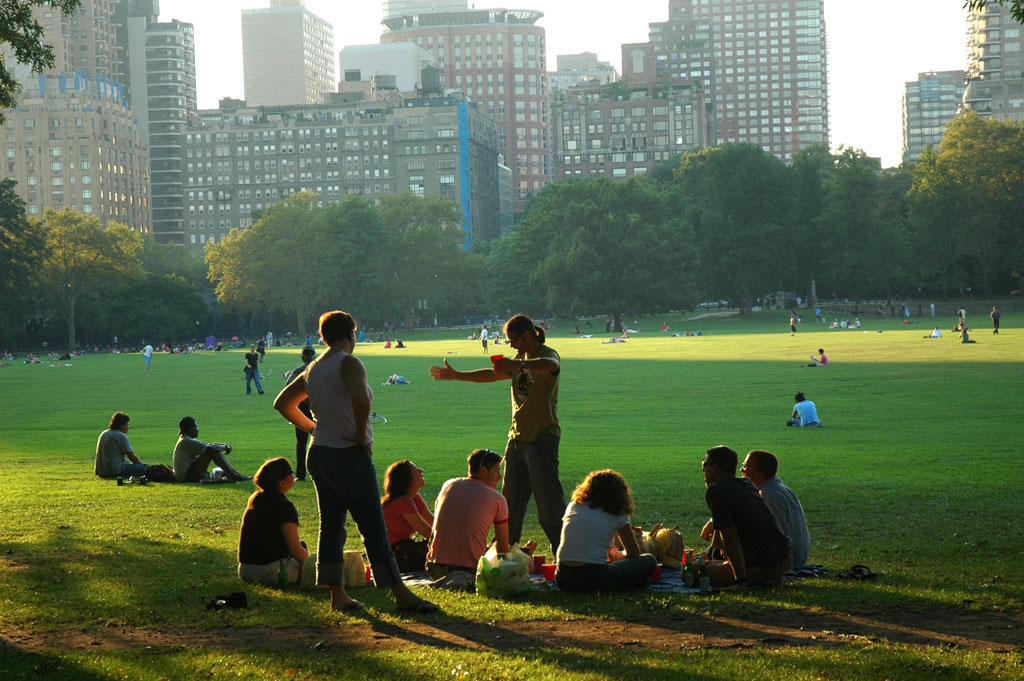
Biophilia as a Concept – The concept of biophilia implies that humans hold a biological need for connection with nature on physical, mental, and social levels and this connection affects our personal well-being, productivity, and societal relationships. – Sheeps Meadow, 2004. Courtesy of Stephen Doyle
Although the concept of biophilia is relatively straightforward to grasp, its neurological and physiological underpinnings and their impacts on the environment are the keys to its value. Millions of neural channels in our brain are linked to the human body’s autonomic nervous system. This system consists of two elements: the sympathetic and the parasympathetic systems. The sympathetic system stimulates the human body when cognitive function is needed. The parasympathetic system serves to relax the body, and is used for internal processes such as digestion. When the body’s natural balance of sympathetic and parasympathetic is achieved, the body is in the ideal state of homeostasis. In chaotic and unsettling environments, the body’s sympathetic system is highly engaged in a “fight-or-flight” mindset. Concurrently, the parasympathetic system is suppressed, disrupting our natural balance and resulting in energy drain and mental fatigue. This combination induces stress, frustration, irritability, and distraction. In contrast, human interaction with nature provides an increase in parasympathetic activity resulting in better bodily function and reduced sympathetic activity. The result is decreased stress and irritability, and the increased ability to concentrate.
One of the many components of the influence of biophilia is the connection that humans have with certain fractal patterns that appear commonly in the natural world. Fractal patterns found in nature can positively affect human neural activity and parasympathetic system mechanisms. When subjects were shown images of fractal patterns in nature or townscapes of the built environment, electroencephalography (EEG) results reflecting neural and parasympathetic system reactions showed that subjects were more wakefully relaxed when exposed to natural landscapes. The study concluded that in environments with many stimuli and patterns, the patterns that are most likely to hold our attention and induce a relaxed response are fractal patterns commonly found in nature (Hagerhall et al., 2008).
Neuroscientists have also found that views of complex, dynamic natural scenes trigger many more interactions of the mu (opioid) receptors in the large rear portion of the visual cortex. Viewing nature is literally a pleasurable experience. Views with less visual richness, such as a blank wall or a tree-less street, are processed in the small forward portion of the visual cortex and trigger far fewer of the mu receptors, triggering less pleasurable mental reactions (Biederman & Vessel, 2006). In contrast, movement in a natural setting, such as waves, leaves in a breeze, fish swimming in an aquarium, or a flickering fire, capture and hold our attention.
Other physiological effects of exposure to nature are well documented. For example, the effects of walking through forest atmospheres versus urban areas have been documented by comparing the salivary cortisol, blood pressure, and heart rate of subjects. On average, salivary cortisol (a stress hormone) was 13.4-15.8% lower, pulse rate was reduced by 3.9-6.0%, and systolic blood pressure was lower in individuals who walked through the forest, compared with those who walked through urban areas. Most impressive, overall parasympathetic activity—which occurs when we feel relaxed—increased by 56.1%, whereas sympathetic activity—which occurs when we feel stressed—decreased by 19.4% in subjects who walked through the forest (Park et al., 2010). These studies support Kaplan and Kaplan’s Attention Restoration Theory (ART): that nature serves as a positive restorative environment for humans and can be effective for stress management, health promotion, psychotherapy, and disease deterrence.
Stress is a known cause of both mental health disorders and cardiovascular diseases. The World Health Organization (WHO) projects mental health disorders and cardiovascular diseases to be the two prime contributing factors to illnesses worldwide by 2020 (WHO, 2008). According to the Center for Disease Control and Prevention (CDC), treatment for cardiovascular disorders account for $1 of every $6 spent on healthcare in America (CDC, 2016). If workers are faced with nowhere to relieve stress in the office, the premature onset of psychiatric, stress-induced, and anxiety-related illnesses can surface (CDC, 2016). Studies show that our ability to directly access nature can alleviate feelings of stress, thus bolstering the case for biophilia in the workplace (Grahn & Stigsdotter, 2010). Recent work by a team at Stanford University found that a walk in nature versus in an urban setting led to lower rates of rumination and activity in the subgenual prefrontal cortex, which can help prevent depression (Bratman et al., 2015). Heart rate has also been measured in natural and urban environments in relation to spatially selective attention. After test subjects viewed videos of the two aforementioned environments, their heart beat interval results suggested that videos depicting natural environments had an involuntary relaxing effect on autonomic functions, inducing positive cardiac deceleration as well as beneficial physiological arousal (Laumann et al., 2003).
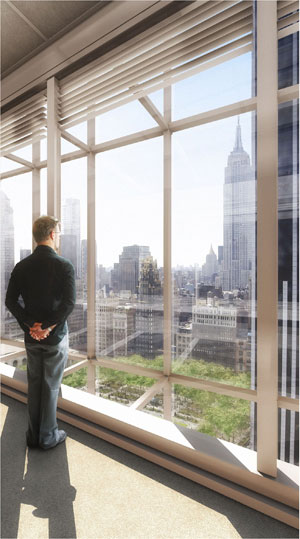
We’re Handwired for it – Affective responses toward environmental settings are not mediated by cognition but stem from a rapid, automatic, and unconscious process by which environments are immediately liked or disliked… because of the hardwired emotional affiliation with certain natural elements, nature-based architecture can awaken fascination for natural forms – Joye, 2007.
One Bryant Park, courtesy of COOKFOX Architects
Another emerging field of research surrounding human interactions with nature, known as Shinrin-yoku in Japan, continues to provide solid evidence of the benefits of natural environments on human health. Shinrin-yoku is the ancient Japanese practice of restorative walks through natural settings, most often forests. In English, Shinrin-yoku directly translates to “forest bathing”. Forest bathing experiments were conducted among 87 non-insulin-dependent diabetics over the course of six years to test the ability of Shinrin-yoku to effectively decrease blood glucose levels in patients. After walking 3-6 kilometers in the forest, blood glucose levels dropped on average from 179 milligrams to 109 milligrams. To ensure that this was attributable to the forest environment, rather than simply the aerobic activity of walking, patients were also monitored while exercising on indoor treadmills and in indoor pools. Compared with these forms of exercise, which effectively reduced blood glucose levels by 21.2%, forest bathing decreased blood glucose by an impressive 39.7% (Ohtsuka et al., 1998). Within forests, human hormonal secretion and autonomic nervous functions are stabilized as we breathe in organic compounds called phytoncides excreted by the forest. New Shinrin-yoku studies show that inhaling these pungent compounds improve immune function as measured by increased human natural killer cell activity, lasting seven days after a forest visit (Li et al., 2007). These health benefits are difficult to reap in the urban and built environments where phytoncide compounds are in low abundance or absent all together.
Our body’s response to daylight is another important clue as to how we can harness the power of biophilia. Daylight affects both our eye functions and our inherent circadian rhythms. Light therapy works by exposing the retina to specific wavelengths of light to treat imbalances of circadian rhythm—the daily cycle of hormonal activity observed in many living organisms. That balance is partially tied to the changing color of daylight over the course of a day. Morning light is yellow, becoming bluer in mid-day and shifting to red in the late afternoon. Exposure to natural light serves to balance our hormonal levels of serotonin (impacts mood) and inhibit the production of melatonin (a neurotransmitter that regulates sleep). When there is an imbalance of serotonin and melatonin in our bodies, our sleep-wake pattern is disturbed, which in turn inhibits our neurological and immune system functions (Carrillo-Vico et al., 2013). To enable our bodies to reach an optimal hormonal balance, natural daylighting provides the greatest unit of luminance and the specific wavelengths of light needed by the human body. Sunlight on a clear day is much more likely than electric light to provide lighting conditions that support homeostasis (e.g., Boyce, 2010). Adequate daylight is thus an essential consideration when designing indoor environments.
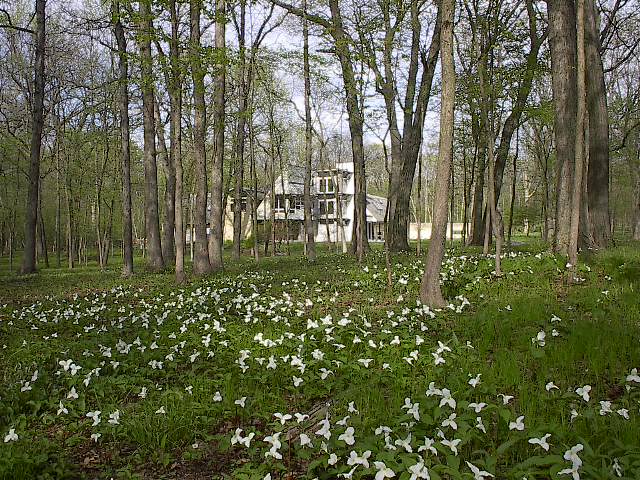
Biophilia & Phytoncides – In the forest, volatile and non-volatile compounds called phytoncides are emitted by plants. Inhaling these has proven to decrease blood pressure and stabilize autonomic nervous activity – Ohtsuka, 1998.
Oak Savanna, Sturm House, courtesy of Bill Browning
These explanations of nervous system activity among humankind provide some clarity of the fundamental physiological value of biophilia. Unfortunately, as we interact less and less with nature on a daily basis, most people are unaware of the neurological effects of nature deprivation. However, the integration of this research into the built environment is rapidly expanding as owners and designers increasingly value the practice of design informed by science. Growing emphasis on building performance and human cognition studies have prioritized initiatives that employ and study biophilic design. The resulting practice is an architecture reflective of the relationships between health, economics, and design.
BIOPHILIA-BASED DESIGN
Three pillar concepts serve as the tenets of biophilic design: Nature in the Space, Natural Analogues, and Nature of the Space. Nature in the Space refers to the incorporation of plants, water and animals into the built environment. Examples include potted plants, water features, aquariums, and courtyard gardens, as well as views to nature from the inside of a building. The prevalence of the courtyard in traditional architecture is a good example of our early attraction to incorporating nature directly into our built environment. These direct connections to nature—especially dynamic nature that incorporates movement—produce the strongest biophilic reactions.
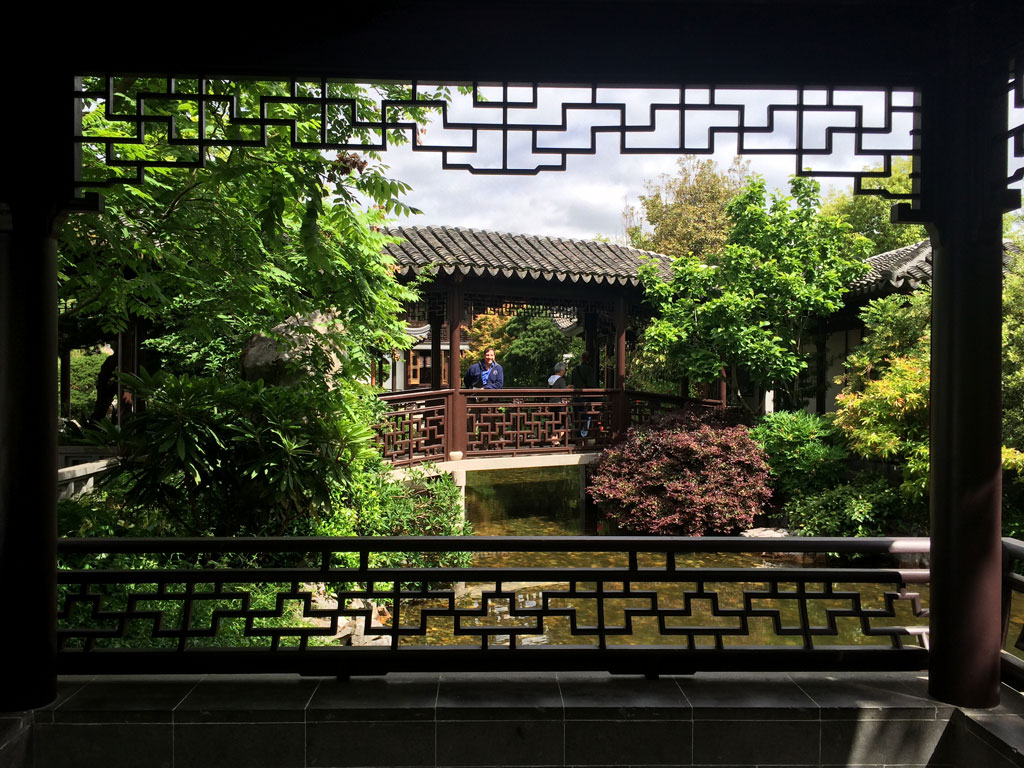
Catie and Bill visited the Lan Su Chinese Garden in Portland, Oregon, as part of Terrapin’s biophilic research effort. As with many traditional Chinese and Japanese gardens and courtyards, Lan Su is supports several characteristics of biophilic design, including water, prospect, refuge, and mystery. As a collaboration between the cities of Portland and Suzhou, China, the authentic Ming Dynasty style Lan Su Garden “melds art, architecture, design and nature in perfect harmony.” Lan Su Chinese Garden, Portland, OR, courtesy of Catie Ryan
Natural Analogues are one degree of separation away from true nature. Natural Analogues are materials and patterns that evoke nature and are characterized by four broad types: representational artwork, ornamentation, biomorphic forms, and the use of natural materials.
Pictures of trees and water, building elements that mimic shells and leaves, furniture with organic rather than geometric shapes, and visible wood grain fall under the umbrella of natural analogues. The benefits of nature represented in artwork are measurable but less effective than benefits derived from actual trees or plants in the outdoors.
Nature of the Space, a similar concept, refers to the way humans respond psychologically and physiologically to different spatial configurations. As mankind developed in the savannas of Africa, our species’ existence among low-growing grasses, clusters of shade trees, and broad vistas have yielded a modern-day affinity for similar landscapes in indoor and outdoor environments (Kellert et al., 2008). In fact, our innate preference for open spaces does not extend to just any open space; physiological research indicates that our bodies react most positively to savanna-like settings with moderate to high depth and openness.
Spatial organization around us drives a major portion of our emotional and mental state. The design concepts of prospect and refuge—elevated views coupled with protected spaces—as well as enticement and peril—exploring unseen space and evoking pleasurable distress—are examples of Nature of the Space.
There is evidence that we are neurally predisposed to prefer vast, expansive views from a position of refuge. In a functional magnetic resonance imaging test (fMRI) that measured neural activity as a response to a variety of pictures, researchers found that subjects who were shown images of prospect from a point of refuge experienced the most fMRI activity in a part of the brain associated with pleasure. Moreover, the test results showed that natural settings were generally preferred to man-made environments. Anthropologists attribute this phenomenon to our evolutionary connection with nature, and the preference for views of prospect to the basic human need to find the best location for a camp or village (Biederman & Vessel, 2006).
LINKING DESIRE FOR NATURE WITH DOLLARS
Researchers have investigated and widely documented various physiological and psychological effects of exposure to nature. The results of these studies—spanning recovery rates of hospital patients through retail sales trends affected by daylighting—often express increases in emotional value. However, the economic benefits of reconnecting people to nature are often overlooked because of the difficulty of quantifying the variables associated with the positive outcomes. By assigning value to a variety of indicators influenced by biophilic design, the business case for biophilia proves that disregarding humans’ inclination towards nature is simultaneously denying potential for positive financial growth.
Over the last quarter century, case studies have documented the advantages of biophilic experiences, including improved stress recovery rates, lower blood pressure, improved cognitive functions, enhanced mental stamina and focus, decreased violence and criminal activity, elevated moods, and increased learning rates.
How do we take the evidence for these benefits and translate them to economics? In the past, research groups have reported various metrics of productivity including revenue, billable hours, net income, and market share gained. Current research uses both direct and indirect approaches.
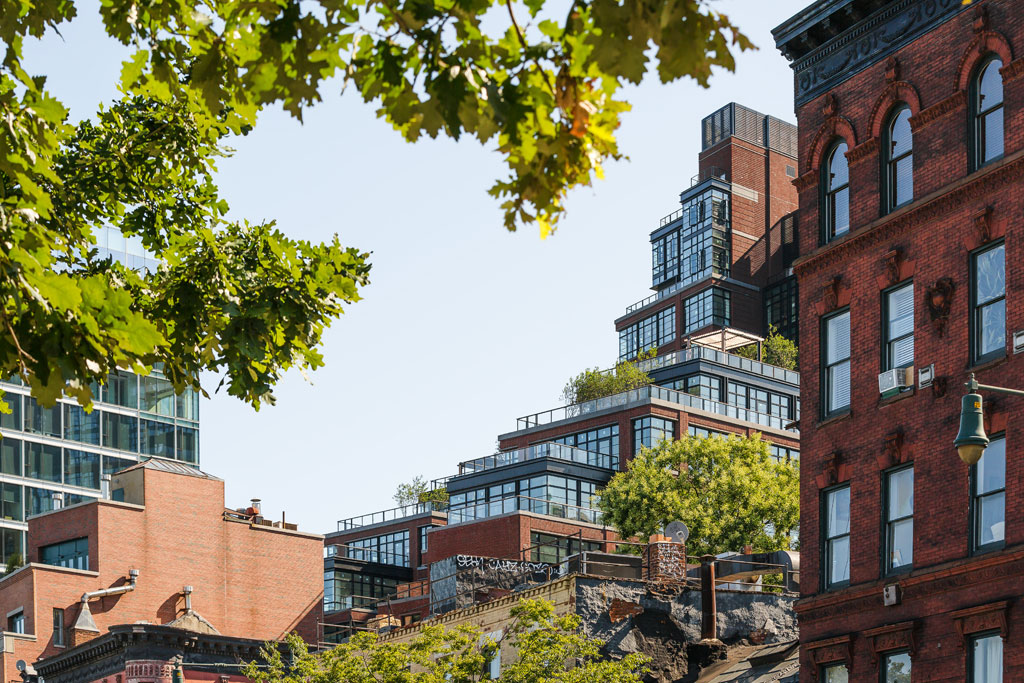
Rick Cook, of COOKFOX Architects, recounts his experience on the designing of 150 Charles Street, a residential building in New York City’s West Village: “We wanted to create a building that was designed to connect people with nature. We worked with the city to author a zoning text amendment that would allow a stepped massing with a cascade of terraces, on the condition of “superior landscaping”—a planted fifth façade. The resulting massing provides generous roof space for nature to grow, and provides residents with as many connections to nature as possible. Access to nature and the views created by the planted terraces became an important selling point in the marketplace. Units commanded some of the highest per-square-foot sales numbers in lower Manhattan. Apartments at 150 Charles Street boast extensive views across the city and the Hudson River, as well as immediate visual and physical connections with nature, daylight and natural materials. 150 Charles Street, New York, NY, courtesy of COOKFOX Architects
Direct measures of productivity encompass quantifiable reported values, for example, the number of customers served or calls taken during a given time period. These metrics can be assigned monetary values in their respective settings and directly converted to cost savings for a company or institution. Indirect measures, although seemingly intangible and unquantifiable, are shown to have merit when examined in detail. Indirect measures of productivity include absenteeism, tardiness, hours worked, safety rule violations and other measures that add up quickly in a corporate budget (Miller et al., 2009). For this series, economic valuation metrics will include the following and will be translated into dollars where most applicable:
• Illness and absenteeism
• Staff retention
• Job performance (mental stress/fatigue)
• Healing rates
• Classroom learning rates
• Retail sales
• Violence statistics
• Lobby dwell time
When linked to the effects of a renewed connection with nature, these metrics show remarkable gains, upon which companies and institutions can capitalize. In the pursuit of maximizing efficiency while minimizing costs, emphasis on worker productivity is extremely undervalued, because productivity benefits are not always immediately apparent, whereas cost reduction strategies are directly identifiable. A quandary arises for decision-makers who are attempting to balance shareholder interests with operational dynamics (Heerwagen, 2000).
Industries spanning a variety of sectors—from hospitals to corporate offices—spend, on average, 112 times the amount of money on people as on energy costs in the workplace. This is precisely where the argument for biophilic design begins to pique the interest of business owners, superintendents, CEOs, policy-makers, and builders. Using 2009 values, the cost per square foot of a given corporate office space is overwhelmingly devoted to salary; 90.3% of costs per square foot are funneled towards salary, while only 8.9% is paid toward rent and mortgage, and 0.8% represents energy costs (BOMA, 2010, US Department of Labor, 2010).
These statistics make it clear that the smartest economic investment is an investment in human capital: employees, their productivity, and their overall satisfaction. An investment in employee workspace may seem less fruitful than an investment in technology upgrades, where the rates of return are calculable. However, the myriad metrics that define worker productivity are rarely coordinated, making the payoff more difficult to quantify, but no less valuable. We begin our exploration of the economic impact of biophilic design in the workplace.
“The Economics of Biophilia” is a six-part republication of “The Economics of Biophilic Design” by Terrapin Bright Green. As a series, each section explores one of five economic indicators as it relates to biophilic design: workplace, healthcare, education, retail, and community.
Work References:
Biederman I., & Vessel E.A. (2006). “Perceptual pleasure and the brain.” American Scientist, 94:249–255.
BOMA (2010). Benchmarking Reports. Experience Exchange Report (EER). BOMA International.
Boyce, P. R. (2010). “Review: The Impact of Light in Buildings on Human Health.” Indoor and Built Environment, 19(1): 8–20.
Bratman, G., Hamilton, J. P., Hahn, K., Daily, G. & Gross, J. (2015). Nature experience reduces rumination and subgenual prefrontal cortex activation, Proceedings of the National Academy of Sciences, doi: 10.1073/pnas.1510459112.
Carillo-Vico, A., Lardone, P. J., Alvarez-Sanchez, N., Rodriguez-Rodriguez, A., & Guerrero, J. M.
(2013). Melatonin: Buffering the immune system. International Journal of Molecular Sciences. 14(4): 8638-8683.
Centers for Disease Control and Prevention (2016). At a glance 2016: Heart disease and stroke: Preventing the nation’s leading killers. National Center for Disease Prevention and Health Promotion. Cdc.gov. Web.
Grahn, P. & Stigsdotter, U. K. (2010). “The relation between perceived sensory dimensions of urban green space and stress restoration.” Elsevier Science Ltd., Journal of Landscape and Urban Planning. 264–275.
Hagerhall, C. M., Laike, T., Taylor, R. P., Kuller, M., & Kuller, R. (2008). Theodore P Martin. “Investigations of human EEG response to viewing fractal patterns.” Perception, 37, 1488–1494.
Heerwagen, J. H. (2000). “Green Buildings, Organizational success, and Occupant productivity.” Building Research and Information. 28(5):353-367. London, UK.
Kellert, S., Heerwagen, J. H., & Mador, M. (2008). Biophilic Design. Hoboken, New Jersey: John Wiley & Sons, Inc.
Laumann, K., Garling, T., & Stormark, K. M. (2003). Selective attention and heart rate responses to natural and urban environments. Journal of Environmental Psychology 23:125–134.
Li, K. M., Kobayashi, H. M., Inagaki, M., Katsumata, Y., Hirata, K., Hirata, H., Suzuki, Y.J., Li,
Y. W., Kawada, T., Park, B.J., Ohira, T., Matsui, N., Kagawa, T., Miyazaki, Y., & Krensky, A. M. (2007). Visiting a forest, but not a city, increases human natural killer activity and expression of anti-cancer proteins. International Journal of immunopathology and pharmacology. 21(1):117-127.
Miller, N. G., Pogue, D., Gough, Q. D. & Davis, S. M. (2009). “Green Buildings and Productivity”. JOSRE. Vol. 1. No. 1.
Ohtsuka, Y., Yabunaka, N., & Takayama, S. (1998). Shinrin-yoku (forest- air bathing and walking) effectively decreases blood glucose levels in diabetic patients. International Journal of Biometeorology. 41:125-127.
Park, B. J., Tsunetsugu, Y., Kasetani, T., Kagawa, T., & Miyazaki, Y. (2010). “The physiological effects of Shinrin-yoku (taking in the forest atmosphere or forest bathing): evidence from field experiments in 24 forests across Japan.” Environmental Health and Preventative Medicine. 15:18–26.
Wilson, E.O. (1984). Biophilia: The Human Bond with Other Species. Cambridge: Harvard University Press.
World Health Organization (2008). Depression. Programmes and Projects. Mental Health. Web.

